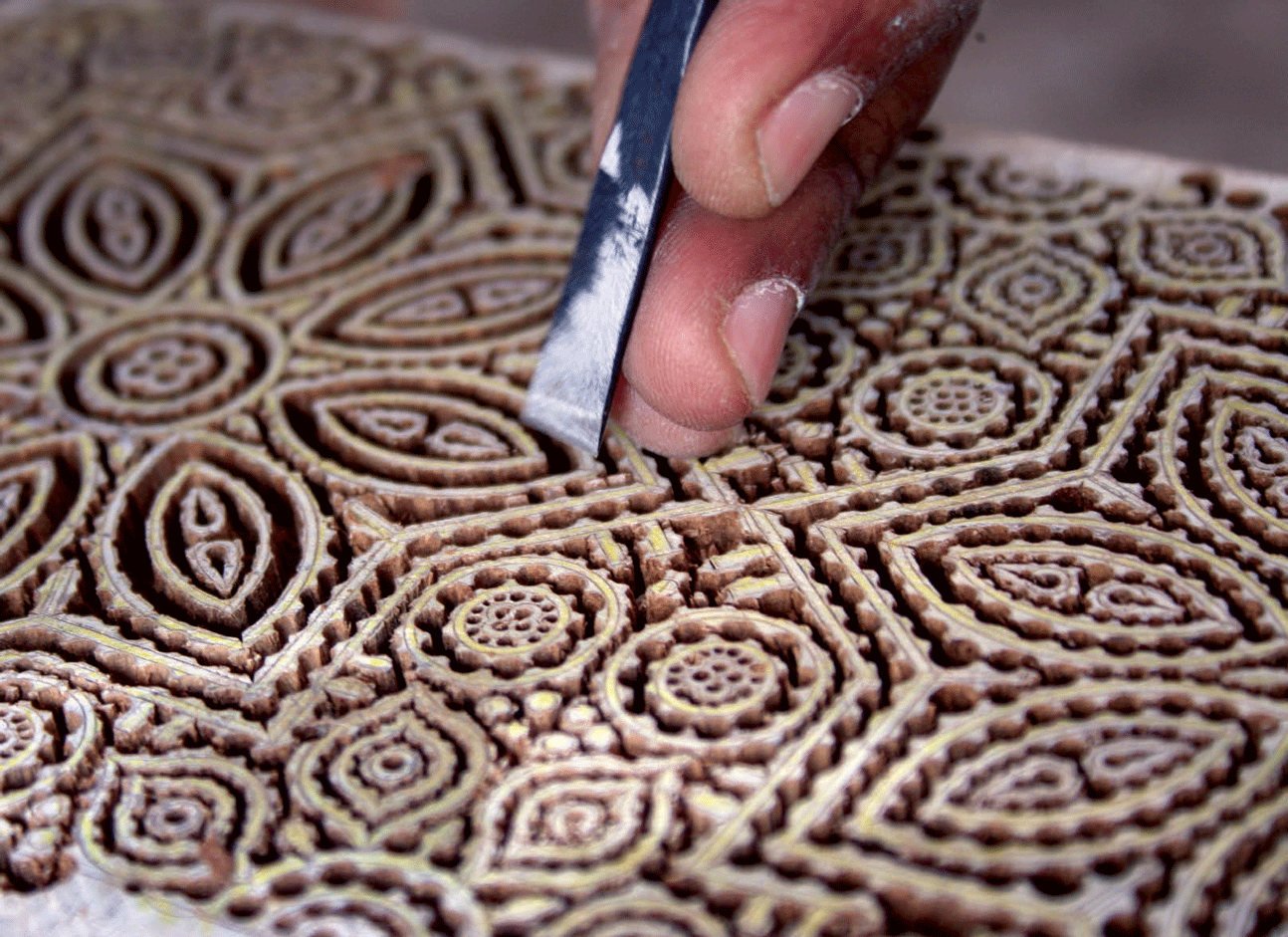
Crafting the blocks
“You can only learn this craft when you are 8-12 years old. if you try to learn when you are twenty your fingers would have already become tight and they are no longer flexible for block making. When I was 14 years I learned to carve a block. I never used to make designs on paper. When I thought of a design I would directly draw it on the wood and carve it out.”
Read full article ⟶
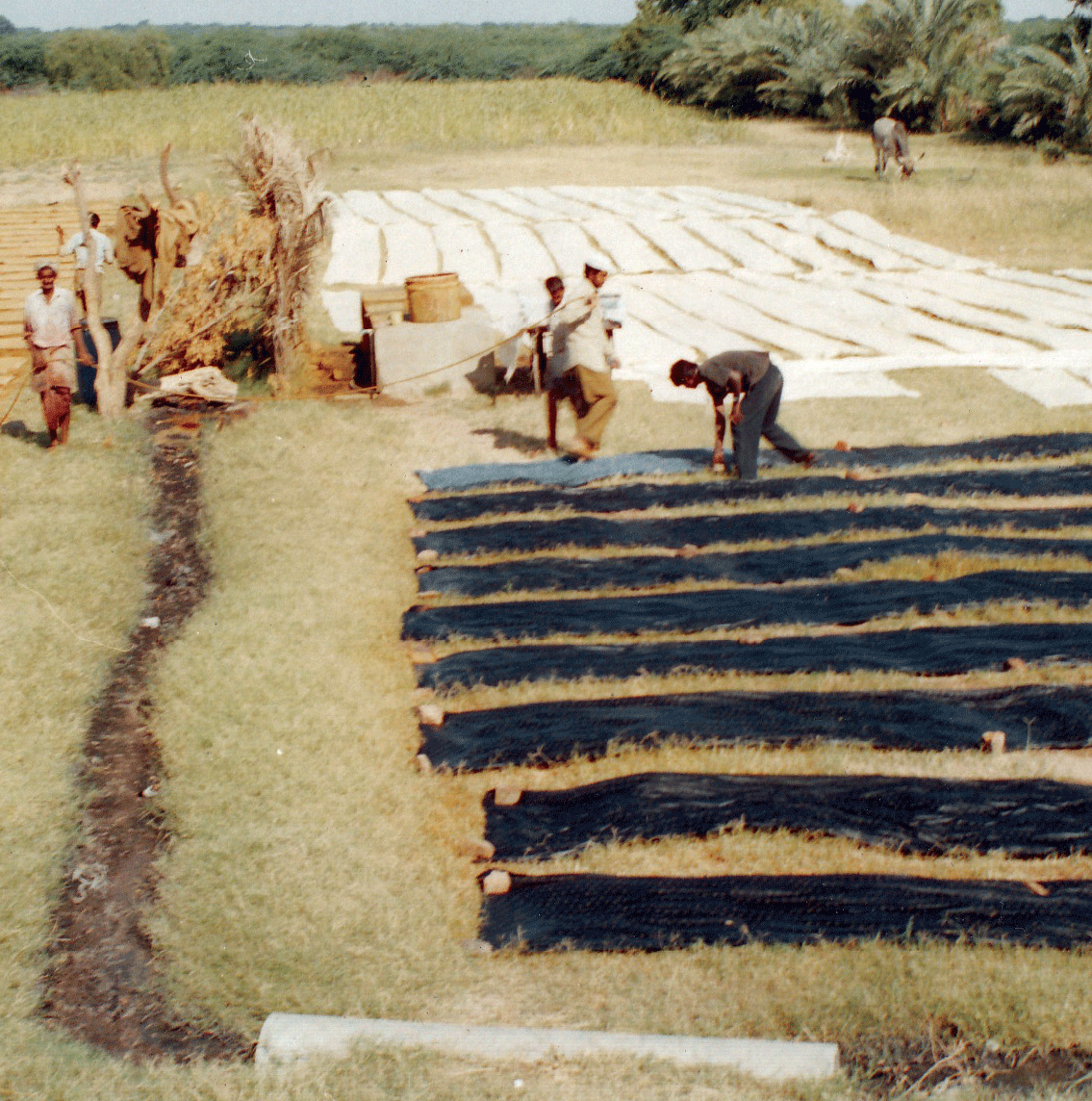
We work in harmony with nature
There is a strong tradition of using natural colors in printing techniques in Kachchh. Indigo blue and madder red were often used together by printers. They enhance each other and have become the identity of the colors from this region.
Read full article ⟶
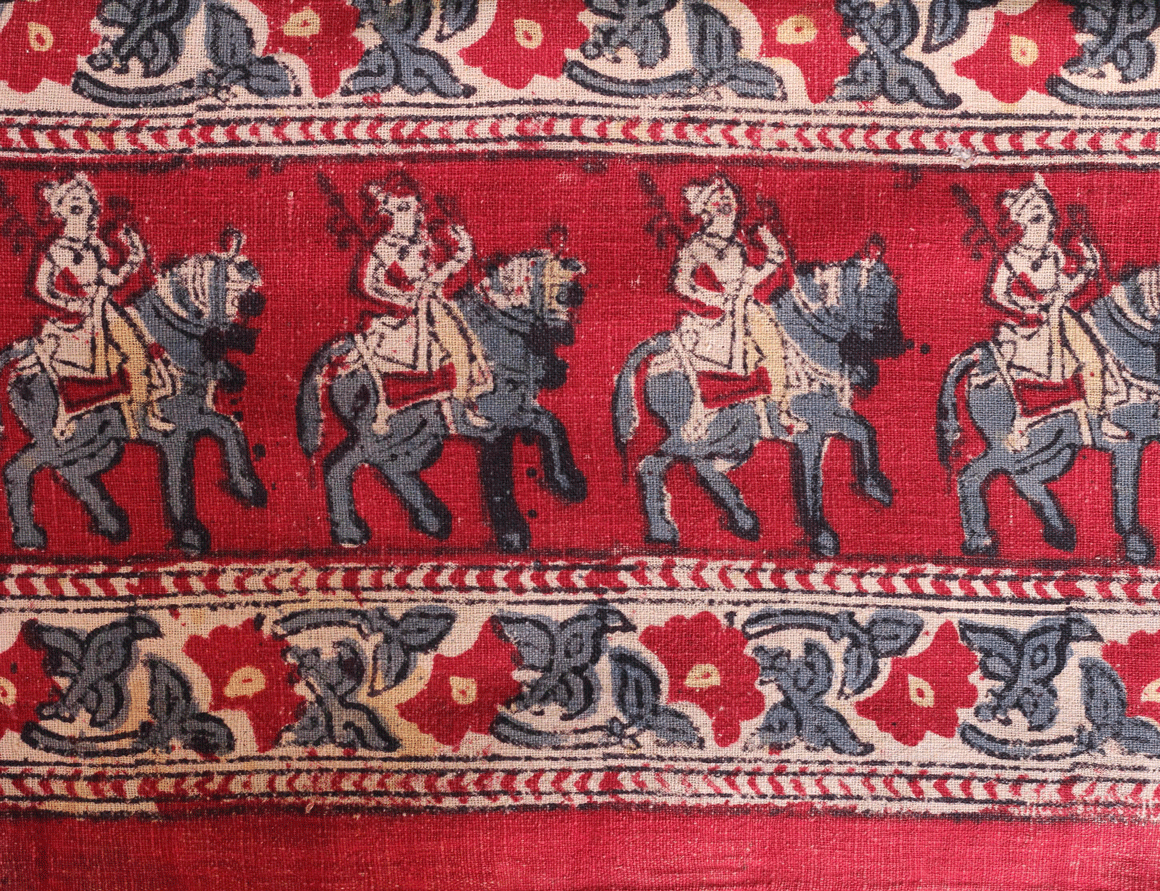
The lost colors of West Kachchh
Known as Patthar printing in these areas, this genre closely resembles the stylized forms of the Sirakh. The communities known to print them were both Muslims and Hindus. The Hindus were settled mostly in the Nana and Mota Angiya villages of Nakhatrana.
Read full article ⟶
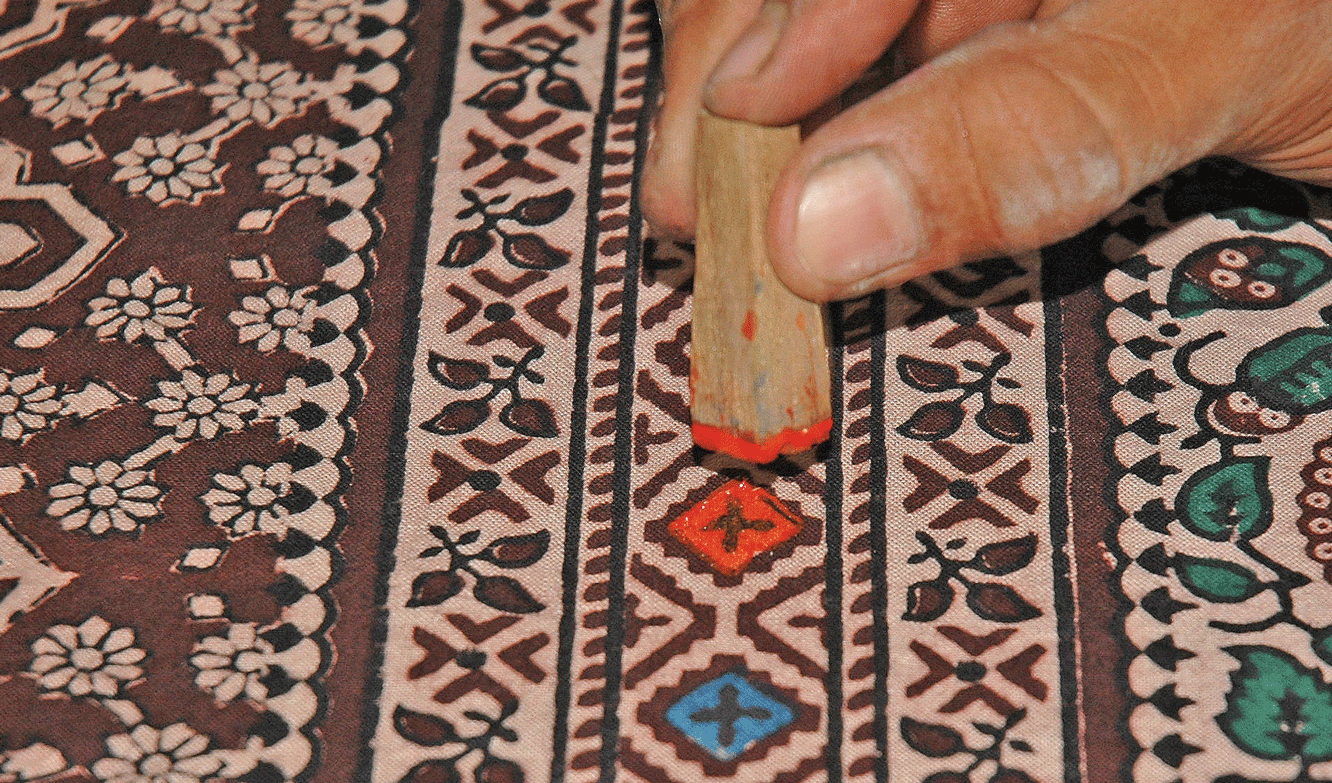
The one piece we made for ourselves
The artistic sirakh, a printed bedcover, uses a lesser known traditional style of hand block printing. It is made of bandhani or block print, and its design is believed to be a precursor to Ajrakh. The patterns used were very floral and free flowing.
Read full article ⟶
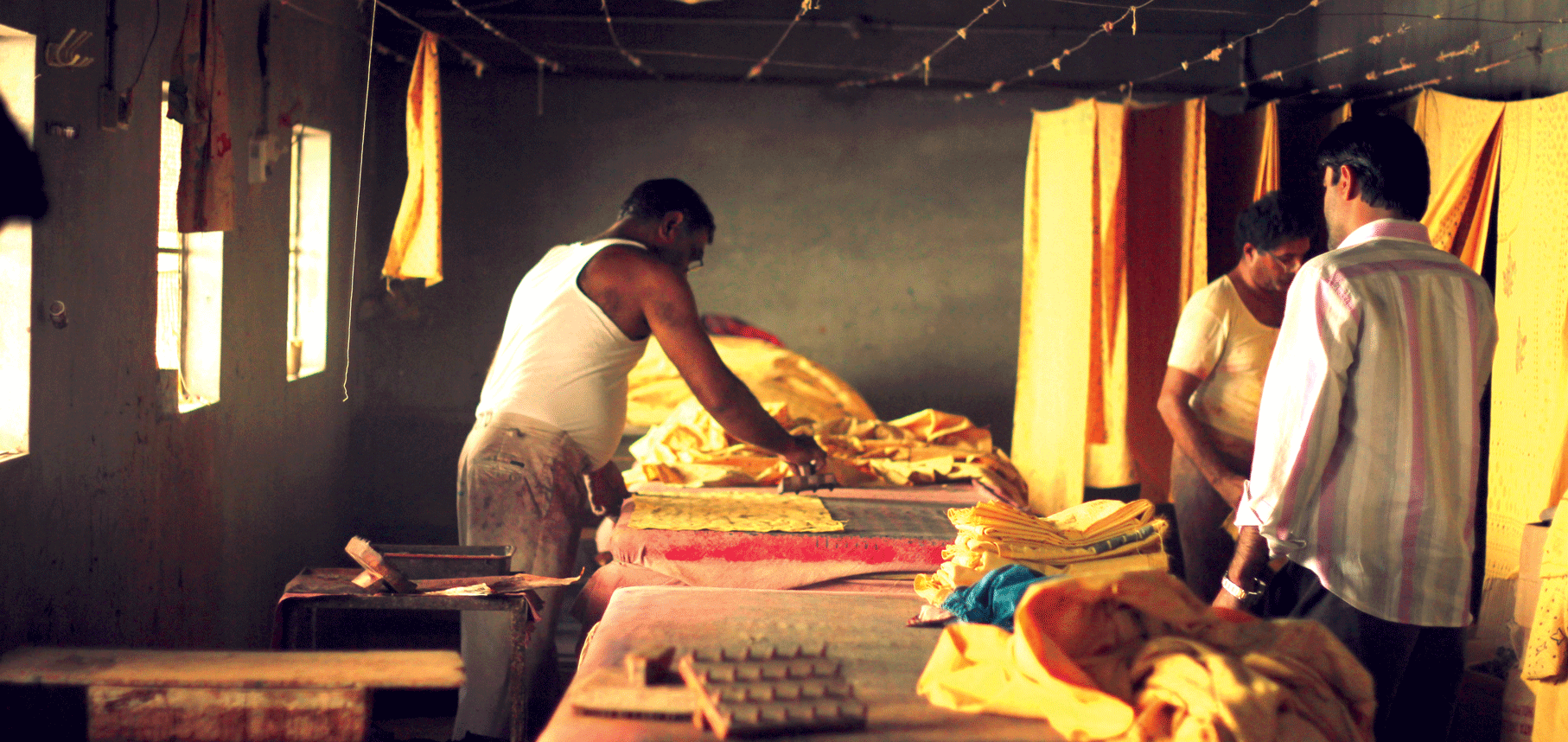
The era of chemical dyes
By the early 1950s, synthetic dyes had replaced most of the natural color in the Indian textile market because of their cheapness and ease of use. Simultaneously, local printing workshops were being threatened by large industrial factories in Mumbai and Ahmedabad that could produce cloth faster.
Read full article ⟶

The batik boom
The special look of Batik in Kachchh developed by coincidence when artisans started using paraffin wax. The character of paraffin wax was such that it would crack while dyeing and leave fine lines of colors on the cloth. Earlier, fabrics displaying these cracks were considered as poor quality, but over time it evolved as the identity of Batik textiles from the region.
Read full article ⟶
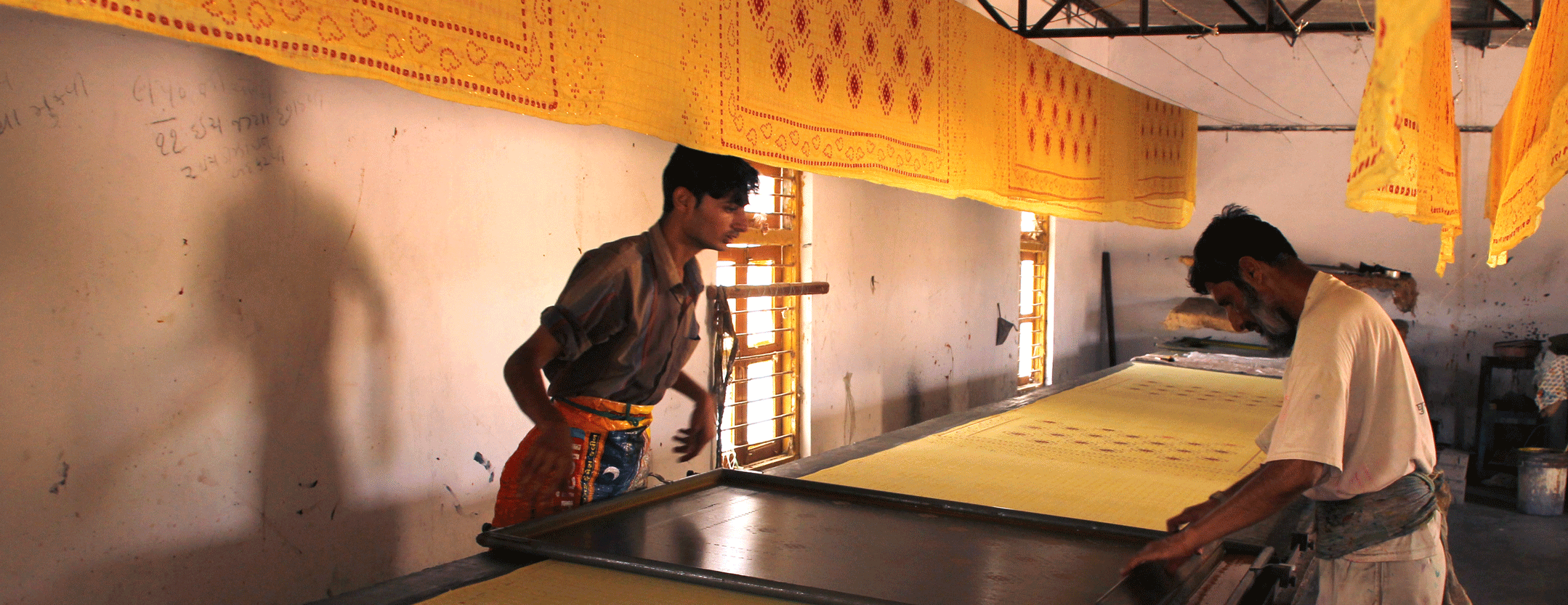
From a block to a screen
Growing competition with factories pushed artisans to embrace changing technologies. Instead of the elaborate hand block print, artisans started shifting to mass production in screen print. The new screen printed fabrics were lighter, brighter, and cheaper than block printed fabrics.
Read full article ⟶

Back to the roots
The rise of factories had nearly buried the value of handicraft. In the 1970s a period of reflection started. The Gandhian idea of India as a “craft nation” became popular again and many states in India initiated programs to support traditional craft artisans in finding new markets.
Read full article ⟶







